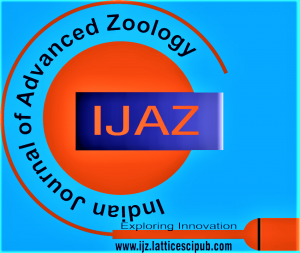![]()
Study of Avian Biodiversity of Aquatic Bodies of Moradabad City, Uttar Pradesh, India
Shalini Gupta
Dr. Shalini Gupta, Asst. Professor, Department of Zoology, Govt. Degree College, Bhojpur, Moradabad (Uttar Pradesh), India.
Manuscript received on 02 January 2025 | First Revised Manuscript received on 10 February 2025 | Second Revised Manuscript received on 16 March 2025 | Manuscript Accepted on 15 April 2025 | Manuscript published on 30 April 2025 | PP: 1-3 | Volume-5 Issue-1, April 2025 | Retrieval Number: 100.1/ijz.A291605010425 | DOI: 10.54105/ijz.A2916.05010425
Open Access | Ethics and Policies | Cite | Zenodo | OJS | Indexing and Abstracting
© The Authors. Published by Lattice Science Publication (LSP). This is an open-access article under the CC-BY-NC-ND license (http://creativecommons.org/licenses/by-nc-nd/4.0/)
Abstract: Biodiversity is the diverse variety of life on Earth, including all life forms and their interactions. Biodiversity is a key indicator of the health of an ecosystem. Rich Avian biodiversity are found in and around these aquatic bodies and wetlands around the world .They comprise resident, non resident and migratory birds. Moradabad city is surrounded by many wetlands and riverine systems and has diverse avian fauna. These birds provide structural and functional framework of the ecosystem and also share interaction with humans. Waterbirds, also known as aquatic birds, are adapted to living in or around water environments, including shores and wetlands. Within this group, some species are more terrestrial, classified as wading birds, while others are more aquatic, commonly referred to as waterfowl. These birds have evolved unique adaptations to thrive in their aquatic habitats. Their feeding habits vary, with some diving from the surface or air to catch prey in deep water, while others feed on the surface. Distinct physical features, such as webbed feet, long legs, pointed beaks, and clubbed beaks, facilitate their feeding and foraging behaviors. A survey of accessible water bodies and wetlands in Moradabad city revealed a diverse range of bird species across different seasons and time zones. Birds were spotted in various habitats, including wetlands, agricultural lands, river shores, ponds, water bodies, and even drainage and sewage systems. The observed bird populations ranged from solitary individuals to flocks of 20-25.
Keywords: Aquatic Avian Fauna, Moradabad City, Water Bodies, Conservation.
Scope of the Article: Ecology
